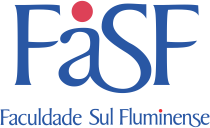Neurociência e Educação para a Ciência: que tipos de produtos “baseados no cérebro” são encontrados nos sítios eletrônicos mais acessados por brasileiros?
DOI:
https://doi.org/10.22408/reva302018153176-187Abstract
O interesse dos educadores em utilizar de pesquisas neurocientíficas em sala de aula, tem feito com que busquem supostas ferramentas facilitadoras do processo de ensino e aprendizagem “baseados no cérebro”, que podem ser geradoras de neuromitos. Sendo assim, o objetivo desta pesquisa é identificar os possíveis produtos baseados no cérebro atualmente comercializados, realizando um levantamento nos maiores sítios eletrônicos de varejo, através de palavras relacionadas a neurociências, como: Cérebro, Mente, Cognição e Neuroeducação. Como resultado, houve grande incidência de produtos, como livros, jogos e brinquedos que prometem favorecer o desenvolvimento e melhorar a função cerebral, bem como meios para potencializar e facilitar o processo de aprendizagem em sala de aula.
Downloads
Literaturhinweise
ANSARI, D; COCH, D. Bridges over troubled waters: education and cognitive neuroscience. Trends in Cognitive Sciences, USA, v. 10, n.4, p. 146-151, 2006.
ANSARI, D; COCH, D; DE SMEDT, B. Connecting Education and Cognitive Neuroscience: Where will the journey take us?. Educational Philosophy and Theory, USA, v. 43, n. 1, P. 37-42, 2011.
BRUER, J. Education and the brain: a bridge too far. Educational Research. v. 26, p.4–16, 1997.
DEKKER, S; LEE, N. C; HOWARD-JONES, P; JOLLES, J. Neuromyths in education: Prevalence and predictors of misconceptions among teachers. Frontiers in Psychology. UK, v. 13, p. 1-8, 2012.
FISCHER, K. W; GOSWAMI, U; GEAKE, J. The future of educational neuroscience. Mind, Bran and Education, USA, v. 4, n. 2, p. 68-80, 2010.
GOSWAMI, U. Neuroscience and education. British Journal of Educational Psychology, UK, v. 74, p. 1–14, 2004.
GOSWAMI, U. Neuroscience and education: from research to practice?. Nature Reviews Neuroscience, USA, v. 7, p 406-413, 2006.
HERCULANO-HOULZEL, S. Do you know your brain? A survey on public neuroscience literacy at the closing of the decade of the brain. The Neuroscientist, USA, v. 8, n. 2, p. 98-110, 2002.
HOOK, C. J; FARAH, M, J. Neuroscience for educators: what are they seeking, and what are they finding?. Neuroethics, USA, v. 6, n. 2, p. 331-341, 2013.
HOWARD-JONES, P.A. Neuroscience and education: myths and messages. Nature Reviews Neuroscience, USA, v. 15, n. 12, p. 817-824, 2014.
LINDELL, A. K; KIDD, E. Consumers favor ‘‘right brain’’ training: the dangerous lure of neuromarketing. Mind, Bran and Education, USA, v. 7, n. 1, p. 35-39, 2013.
ORGANISATION for ECONOMIC CO-OPERATION and DEVELOPMENT (OECD). Understanding the brain: Towards a new learning science. França, 2002.
PASQUINELLI, E. Neuromyths: Why do they exist and persist?. Mind, Brain and Education, USA, v. 6, n. 2, p. 89-96, 2012.
PURDY, N. Neuroscience and education: How best to filter out the neurononsense from ourclassrooms?. Irish Educational Studies, Londres, v. 27, n. 3, p.197-208, 2008.
PURDY, N; MORRISON, H. Cognitive neuroscience and education: Unravelling the confusion. Oxford Review of Education, Londres, v. 35, n. 1, p. 99–109, 2009.
SHAMOS, M. H. The myth of scientific literacy. New Brunswick: Rutgers University Press, 1995.
TARDIF, E; DOUDIN P-A; MEYLAN, N. Neuromyths among teachers and student teachers. Mind, Brain and Education, USA, v. 9, n. 1, p. 50-59, 2015.
Downloads
Veröffentlicht
Zitationsvorschlag
Ausgabe
Rubrik
Lizenz
Autores que publicam nesta revista concordam com os seguintes termos:
Autores mantêm os direitos autorais e concedem à revista o direito de primeira publicação;
Autores têm permissão e são estimulados a publicar e distribuir seu trabalho online (ex.: em repositórios institucionais ou na sua página pessoal) já que isso pode gerar alterações produtivas, bem como aumentar o impacto e a citação do trabalho publicado
Em virtude da aparecerem nesta revista de acesso público, os artigos são de uso gratuito, com atribuições próprias, em aplicações educacionais e não-comerciais.











